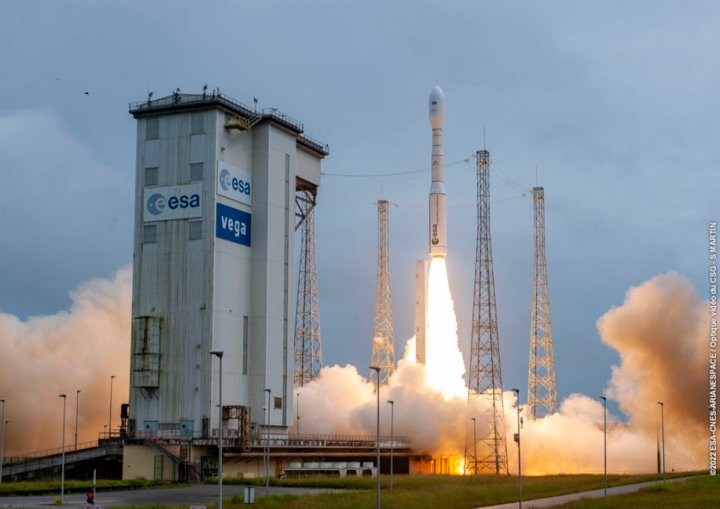When the European Union sanctioned Russia for its invasion of Ukraine last year, the Russian space program responded by revoking European access to its Soyuz rockets. That left the European Space Agency (ESA) in need of a rocket that could launch satellites into orbit. As a result, ESA had been working on an upgrade to its own rocket, the Vega, which is designed for launching small payloads.
The updated version of the Vega, the Vega-C, debuted in July 2022 , when it carried a variety of satellites safely into orbit.

So far, so good. The second mission for the Vega-C in December 2022, however, did not go so well. The rocket lifted off as planned from Europe’s Spaceport in Kourou, French Guiana, but around two-and-a-half minutes after liftoff a problem occurred with the rocket’s second stage. The mission failed and the payload, two Pléiades Neo Earth observation satellites for Airbus Defence and Space, were lost.
At the time, it wasn’t clear what had caused the issue with the rocket. But now, an independent inquiry has reported its findings on the launch failure. The failure was due to a faulty nozzle on the second stage, called Zefiro 40. The rocket’s first stage worked correctly, but when the ignition was fired for the second stage, the nozzle caused a loss of pressure, leading to the rocket failing.
The nozzle had a manufacturing defect, causing it to deteriorate due to the heat and stresses it had been put under. “The Commission confirmed that the cause was an unexpected thermo-mechanical over-erosion of the carbon-carbon (C-C) throat insert of the nozzle, procured by Avio in Ukraine,” ESA wrote. “Additional investigations led to the conclusion that this was likely due to a flaw in the homogeneity of the material.”
A concern raised by the commission was that the criteria used to select the nozzle had not been sufficiently stringent to where it could have helped to identify the flaw. ESA said it would not be using this particular C-C material any more, and would perform more testing on the alternative material used instead. The aim is to makes these changes and launch another Vega-C by the end of 2023.
“The Independent Enquiry Commission stands for ESA’s commitment to the highest safety standards. It has drawn a set of recommendations that, once implemented, should ensure a robust, reliable return to flight of the Vega-C launcher,” said Josef Aschbacher, ESA director general, in a statement. “ESA will fully engage its engineering and project management expertise to support Avio in the implementation of actions required to regain confidence in the launcher system. Restoring Europe’s independent access to space is ESA’s priority, and I am therefore glad that we can proceed with Vega launch campaigns while preparing Vega-C to safely return to flight.”
Editors' Recommendations
- SpaceX smashes its own record for rocket launches in a year
- How to watch the first launch of a new European rocket on Thursday
- Rocket heading for moon impact may not be SpaceX’s after all
- Watch the European Space Agency test the parachute for its new Mars rover
- Gorgeous time-lapse shows starry night at rocket launch site




